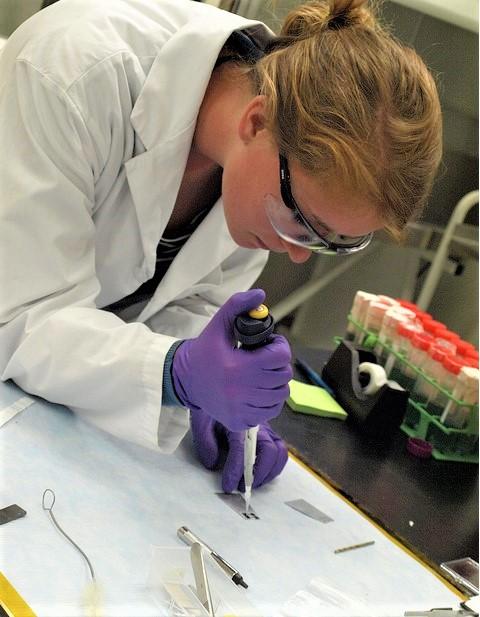The US Food and Drug Administration (FDA) today announced a multipronged strategy to address antimicrobial resistance (AMR) that emphasizes new measures to spur development of antibiotics and alternative therapies, promote antibiotic stewardship in animal health, advance antibiotic resistance surveillance, and enhance regulatory science.
"We can't count on outracing drug resistance," FDA Commissioner Scott Gottlieb, MD, said in announcing the strategy. "But we can use stewardship and science to slow its pace and reduce its impact on human and animal health."
Noting the agency's role in overseeing and regulating drug development, safety, and use, Gottlieb said the strategy aims to combat AMR by addressing the "full continuum" of antibiotic development and use in both humans and animals.
"Because of the FDA's statutory responsibility for assuring safe and effective products that promote and protect both human and animal health, we have a unique vantage point for coordinating all of these aspects of a product’s development and application to health," Gottlieb said.
The strategy was developed by members of the FDA's Center for Veterinary Medicine, Center for Drug Evaluation and Research, Center for Devices and Radiological Health, Center for Biologics Evaluation and Research, and National Center for Toxicological Research.
Changing the antibiotic reimbursement model
Leading the new strategy is a focus on ways the agency can facilitate development of new antibiotics.
Speaking to an audience at the Pew Charitable Trusts in Washington, DC, Gottlieb praised efforts to stimulate antibiotic research and development, highlighting the Generating New Antibiotics Now (GAIN) Act and the Limited Population Pathway for Antibacterial and Antifungal Drugs (LPAD) program. But he said these "push" incentives, designed to get product research and development off the ground, are not enough to stem the tide of pharmaceutical companies that are dropping antibiotic-development programs.
"I think much more emphasis needs to be placed on developing 'pull' incentives," Gottlieb said. "I'm deeply concerned that without stronger 'pull' incentives that encourage more research and development, we'll see a far less robust pipeline of products than we need to address antimicrobial resistance."
The issue, Gottlieb explained, is a problem with the current reimbursement scheme for drugs, in which profits are driven by sales. That model doesn't works well for new antibiotics, which are generally kept in reserve until older antibiotics fail. While that's good stewardship, it means that the company that developed the antibiotic doesn't make much money early in the drug's patent life. For many pharmaceutical companies, this makes the economics of antibiotic development unappealing.
As a result, the pipeline for new antibiotics has dwindled. According to a just-updated analysis by Pew's antibiotic resistance project, there are only 11 antibiotics currently in clinical trials to address the bacterial pathogens deemed the biggest threats by the World Health Organization (WHO).
To address this problem, Gottlieb suggested the development of a new reimbursement model that would combine milestone payments and subscription fees for new FDA-approved antibiotics that have high clinical and social value—such as drugs that treat multidrug-resistant organisms. The subscription fees for access to the new drugs would be priced at such a level to create a sufficient return on investment, Gottlieb explained. "This should have the effect of creating a natural market for drugs that meet certain important specifications," he said.
Many experts who follow antibiotic development have been calling for politicians and regulatory agencies to address the lack of economic incentives for new antibiotic development.
"It's great to hear an FDA commissioner acknowledging that there is a need for economic incentives…like new ways of paying for antibiotics that are divorced from volume of use," Gregory Daniel, PhD, MPH, RPh, deputy director of the Duke-Margolis Center for Health Policy, said in an interview. Daniel and his colleagues last year authored a paper that proposed a new reimbursement model for antibiotics that would combine a market entry reward with population-based payments from insurance companies. "This is very much in line with our version of a new payment model," he said.
Daniel said he thinks the fact that the FDA is moving from acknowledging the reimbursement problem to actively proposing ideas to solve it sends an important message to pharmaceutical companies. "I think it speaks volumes, and shows that it's reached a fever pitch to actually start getting some action."
Gottlieb said the agency is currently discussing this and other potential payment strategies, which would be linked to the promise of effective stewardship efforts by hospitals and drug makers, with the Centers for Medicare and Medicaid Services. In addition, commercial insurers could work with groups like the Gates Foundation and BARDA (the Biomedical Advanced Research and Development Authority) to develop pilot programs. Daniel said small pilot programs with private insurers are the most likely method for testing these alternative payment strategies.
Gottlieb added that the FDA is also committed to developing vaccines to prevent infections by resistant microbes, along with non-traditional products like bacteriophages, live biotherapeutic products (probiotics), and fecal microbiota transplantation.
Stewardship in veterinary medicine
The stewardship element of the strategy focuses mainly on antibiotic use in veterinary settings, which is overseen by the FDA. In recent years the agency has made strides in this area through the implementation of two Guidances for Industry (GFI #209 and GFI #213), which seek to end the use of medically important antibiotics for growth promotion in food-producing animals and brought 95% of medically important antibiotic used in food-animal water and feed under veterinary supervision. But Gottlieb acknowledged that a lot of work remains.
To further ensure that all medically important antibiotics used in livestock and poultry are being used appropriately, Gottlieb said the agency—through the Center for Veterinary Medicine—will bring the remaining 5% of medically important antibiotics under veterinary supervision. Some of these products, which mainly consist of injectable antibiotics, can still be bought over the counter, without a veterinary prescription.
In addition, the agency will develop plans to ensure that all medically important drugs used in animal water and feed have defined duration of use. Currently, 40% of the medically important antibiotics approved for use in food-animals have at least one indication without a defined duration of use, which means farmers can continuously use them at sub-therapeutic doses. Critics contend that this contributes to the development of antibiotic resistance and have called on the FDA to address the loophole.
But Avinash Kar, a senior attorney with the Natural Resources Defense Council, expressed concern that the details on these objectives, which are contained in the FDA's newly released 5-year plan to support antibiotic stewardship in veterinary settings, are lacking—particularly on duration limits. "We don't have any details on what this is going to look like," Kar said. "What is a reasonable duration limit?"
Kar said that until the FDA actually defines appropriately targeted duration of use for these drugs (the plan says that won't happen until 2022 to 2023), it's hard to say whether the agency is adequately addressing the issue.
The plan also includes efforts to improve the data on antibiotic sales, use, and resistance in food-producing animals, provide more outreach and education on the judicious use of antibiotics in farms animals, encourage the development of alternative therapies for sick animals, and promote stewardship in companion animals. But Kar noted that the document does not address the issue of using medically important antibiotics for disease prevention in herds and flocks, which many experts believe is driving resistance, nor does it include targets for reducing antibiotic use on farms.
"Neither of those two critical elements is visible in the plans that were released today," Kar said.
In October 2017, the WHO issued guidelines recommending that medically important antibiotics be used only to treat sick animals, arguing that the widespread use of these drugs for growth promotion and disease prevention in animals contributes to the spread of AMR. But the FDA maintains that disease prevention is an element of judicious use.
"We should obviously try as best we can to limit the use of these drugs to only when they're necessary," William Flynn, DVM, deputy secretary of science policy at the Center for Veterinary Medicine, said in a panel discussion that followed Gottlieb's remarks. "That's sort of the core principle, that we make sure that we're only using these medically important antibiotics when there's an actually animal health issue that's being addressed. I think from our perspective, that may be through treating a disease, controlling a disease, or preventing a disease."
"You're talking about the use of antibiotics in the absence of disease," Kar said. "I think there's very little justification for calling that therapeutic, and there's a lot of overlap between growth promotion and disease prevention in that context."
Surveillance and regulatory science
On the third key area of the strategy, surveillance, Gottlieb said the agency is working on plans to expand the National Antimicrobial Resistance Monitoring System (NARMS)—which tracks resistance in Salmonella, Escherichia coli, and other harmful bacteria transmitted commonly through food—to include previously underexplored bacteria and other pathogens found in companion animals and animal feed.
On the human side, the agency will work with the Centers for Disease Control and Prevention and other stakeholders to improve the collection and reporting of AMR data. To date, Gottlieb explained, inconsistencies in the reporting of antibiotic susceptibility test results across different institutions has made it difficult to track resistance. He said continued development of a system to harmonize AMR data and make it usable across institutions (SHIELD—Systemic Harmonization and Interoperability Enhancement for Lab Data) should "unlock the ability for real-time clinician support across all electronic health record systems."
On regulatory science, Gottlieb said the FDA will be working with partners to streamline clinical trials and to identify areas in which regulatory science can support new antibiotic development.
"I’m confident that efforts we're launching today—and the ones that we'll continue in the months and years to come—will help us achieve our goal of facilitating stewardship and advancing innovation across human and animal health, within our borders and across them," Gottlieb said.
See also:
Sep 14 Scott Gottlieb remarks
Sep 14 FDA Center for Veterinary Medicine 5-year plan
Pew report on antibiotics in development (updated September 2018)

























